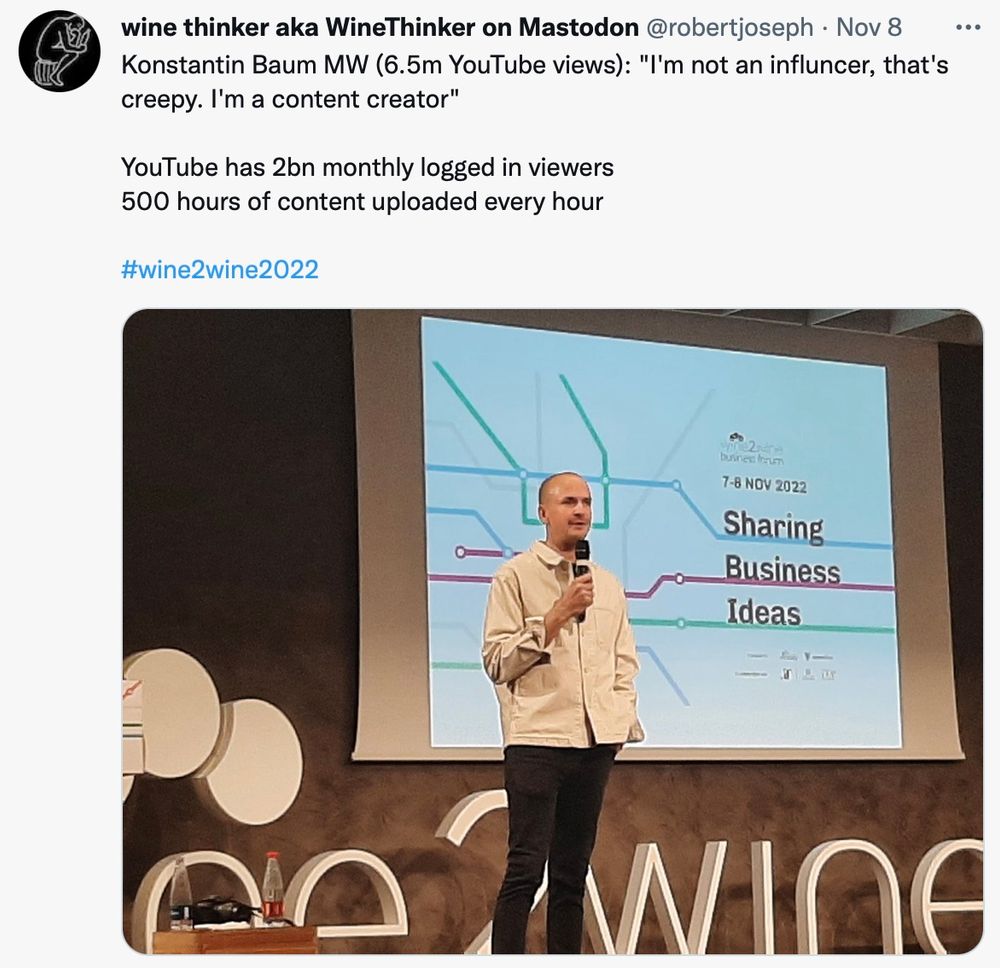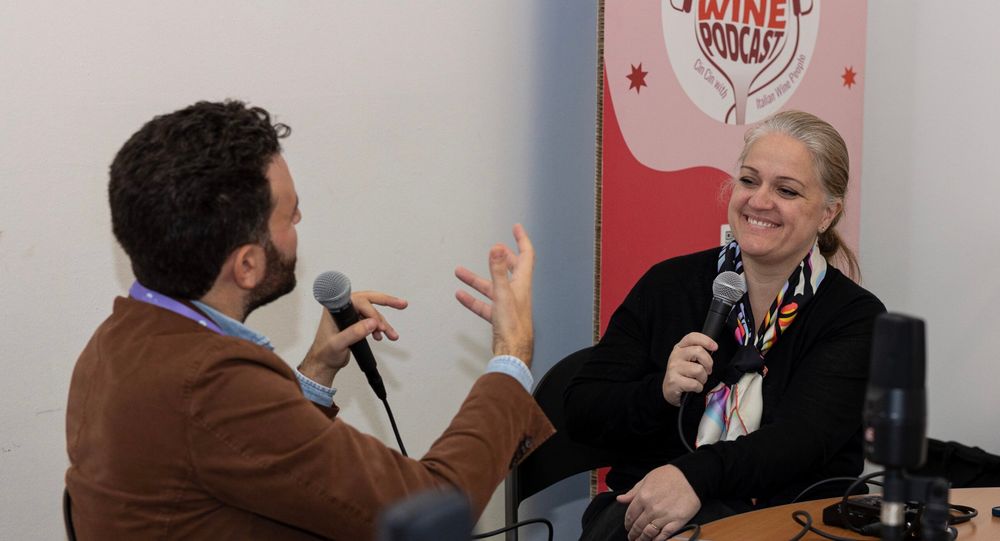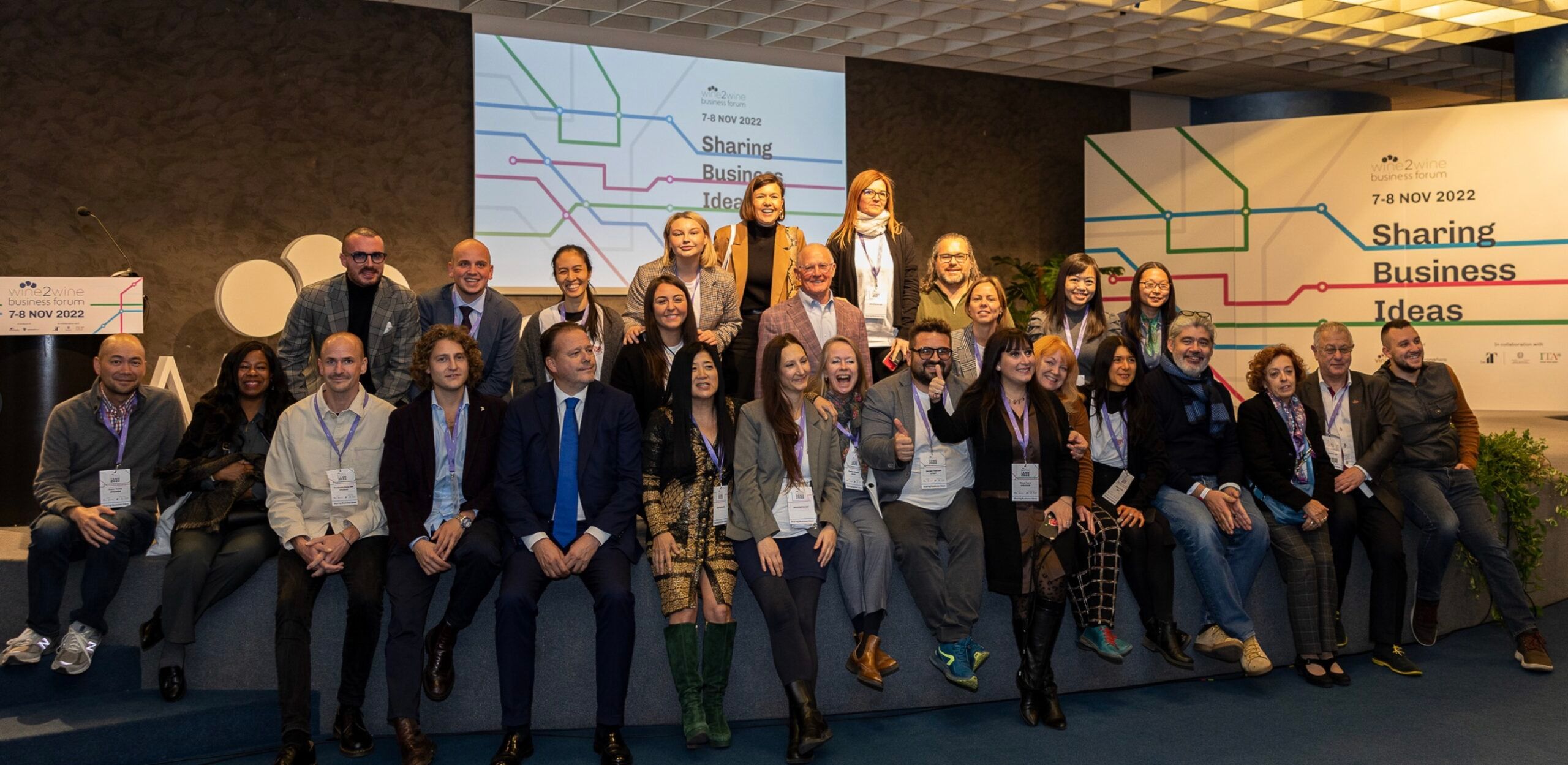With over 50 talks, workshops, tasting seminars, networking opportunities, a book corner and a podcast marathon, the 9th edition of VinItaly’s wine2wine business forum in Verona was a fantastic deep-dive into ‘wine communication’.
The schedule for wine2wine highlighted the global nature of the wine world. With talks on Scandinavian market trends, the Hispanic community in the US, how to succeed in the African market and China and with speakers from Italy, the UK and the US, it showed how inextricably linked the wine world is.
Talks covered the traditional (wine journalism, media landscapes), the innovative (blockchain, NFTs and virtual influencers) and the abstract (pricing, brand positioning), giving a glimpse into the myriad channels and themes that make up wine communication today.
Across the programme, there were three main themes that kept reoccurring and, in doing so, underscored how to communicate wine effectively in today’s world.
Listen before you speak

Stevie Kim once again brought the world of wine communications together at wine2wine
Many of the talks came back to ‘the lost art of listening’ – finding the right message, moment and audience for what we want to say.
In her talk on ‘Standing out in a noisy world’, Polly Hammond, founder and chief executive of 5forests, an award-winning brand agency, defined the first step as ‘radical listening’: examining your audience without bias (both through quantitative data and though talking to them and seeing what they say on social media) to find what they are truly interested and when they are interested in interacting with you and working from there. Hammond reiterated that during this process it’s important to set aside any pre-conceptions to work out what is resonating with your audience, rather than launching into a pre-prepared spiel that no-one will want to hear.
US wine writer Cathy Huyghe, and founder of Enolytics that specialises in helping wine businesses unleash the power of data, also underlined the importance of listening internally when preparing your narrative for an audience. She encouraged adopting a journalistic method, using Sakichi Toyoda’s ‘Root Cause Analysis’ to dig down to the essential truth at the heart of any winemaker’s story. This involves asking ‘why’ five times, starting with a broad question along the lines of ‘Why do you make wine?’ and drilling into the answer four more times to end up with a unique reason to provide an interesting hook.
Such a short process can provide surprising and revealing results – such as a Lebanese winery that went from the simple ‘Because I love wine’ to finding its central purpose in providing a sense of continuity and community in a war-torn landscape.

Robert Joseph highlighted how Konstantin Baum MW is attracting a large online audience
Seek scarcity
Both Huyghe and Hammond’s talks were centred around the holy grail of wine (and other) communication: creating or finding scarcity in your narrative. If you are not telling a story that is unique, the likelihood of anyone else being interested is slim. The message was clear, as a winery, if you’re talking to press about the fact that your family has worked the land for four generations, you are one of countless others and your story won’t be re-told. It also pays to be timely – if you’re still trying to impress with stale stories of sustainability, or your freshly-minted wine NFT, you’re too late.
Keep it simple
Having looked at what, where and why we are communicating, the wine industry in particular needs to consider how it is speaking to consumers.
Wine can be a niche subject, and with its own vocabulary and a wealth of technical information available behind even the most ‘simple’ of bottles it’s easy to overwhelm. This message was front and centre in the several talks from social media managers and influencers: the wine content that works on these channels speaks directly to consumers and treads the line between patronising and remaining accessible.
Speaking about TikTok specifically, Amanda McCrossin (@Somm_vivant) emphasised how followers were drawn to content that demystified wine in some way – such as de-coding a restaurant wine list. McCrossin attributed her success on TikTok to consumers’ eagerness to learn about even more niche topics: her most viewed video to date is a demonstration of how port tongs work, which has generated over 1.9 million views.

5forests’ Polly Hammond says wine communications is only good when it is original and thought provoking
Robert Joseph, wine business consultant and editorial consultant for Meiningers, and Alice Feiring, author, journalist and ‘queen of natural wines’, also examined how and where we should be approaching wine consumers. Joseph questioned the wine trade’s fixation with specialist wine media, as a route to the end consumer: why not place information that you want the majority of people to see, where the majority of people are already looking?
Feiring took a similar view, having just released a book that successfully interweaves essays on life and musings on wine – the key to engaging wine consumers is to remember that they are not solely wine consumers, they have other interests and needs, so when you can stitch wine into culture and daily life, you capture their attention without giving them the burden of searching you out.
In short wine marketeers should think and listen before they speak and aim to deliver unique, engaging stories in a way and a place that makes sense to the consumers that they are talking to.
































